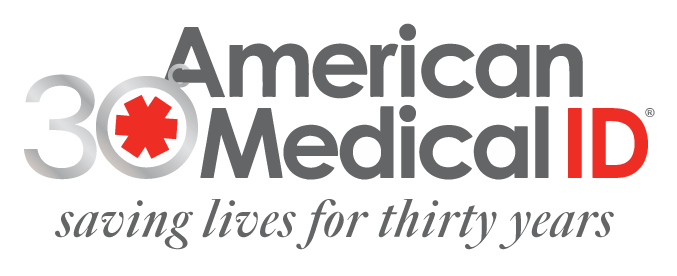Medical IDs for Visual Impairment


A medical ID is recommended for all types of visual impairment. Visual impairment, also known as vision impairment or vision loss, is any visual condition that decreases a person's ability to see. Impairment of vision can occur at any point in life but is more common among the elderly.
According to the CDC, approximately 12 million people 40 years and over in the United States have vision impairment. Blindness, low vision, or profound vision loss are serious conditions, and it is important that those living with the condition are properly identified with a medical bracelet or necklace in case of an emergency.
"For people who are blind, have low vision, or are physically disabled, emergency situations can be especially challenging. Their mobility may be limited, they may not be able to access the technology or electrical infrastructure that they rely on, and emergency workers may not be able to adequately communicate instructions or procedures to them.” - The National Library Service for the Blind and Print Disabled
Common Types of Visual Impairment
| Low visual acuity |
Vision between 20/70 and 20/400 with the best possible correction, or a visual field of 20 degrees or less. |
| Blindness |
Visual acuity worse than 20/400 with the best possible correction, or a visual field of 10 degrees or less. |
| Legal blindness |
Visual acuity of 20/200 or worse with the best possible correction, or a visual field of 20 degrees or less. |
| Moderate visual impairment or low vision |
Visual acuity of 20/70 to 20/400. |
Visual impairments affect a person's ability to communicate effectively with others. According to the Americans with Disabilities Act, individuals who are blind or visually impaired may not recognize or be able to respond to police directions and risk being erroneously perceived as uncooperative.
"Wear medical alert tags or bracelets to identify your disability in case of an emergency. These may save your life if you are in need of medical attention and unable to communicate." - National Disaster Education Coalition
Visual Impairment and Medical IDs in Emergency
Misidentification of vision loss as a symptom of head injury can delay necessary diagnosis and treatment. Wearing a medical ID bracelet or necklace can effectively alert doctors, nurses, responders, and other health professionals of an existing visual impairment or visual disorder. This way, traumatic visual loss related to direct ocular injury can be ruled out immediately.
Emergency responders are trained to look for identification bracelets with special health information upon their arrival.
"The most important skill to have in independence is to stay safe. One device that I carry with me to school, the airport, and other places is a medical alert bracelet or necklace to use in an emergency." - Jasmyn Polite, person with a visual impairment
What to Engrave on a Vision Impairment Medical ID
Not all visual impairments are the same and the degree of impairment can range from mild to severe. Custom engraving ensures that a medical ID accurately communicates the type or level of vision loss that a person has.


Here are some of the most important items to put on a visual impairment medical ID:
- Name
- Visual impairment – if possible, include the type or level of vision loss and if there are other medical conditions, related or not, such as diabetes or hearing impairment.
- Implants – include information about implants or devices such as intraocular lenses, ocular prosthesis, bionic eyes, and retinal or cochlear implants.
- In case of emergency contacts - or a prompt to call 911



 - UK
- UK  - Canada
- Canada  - Australia
- Australia 